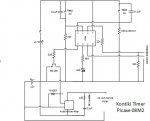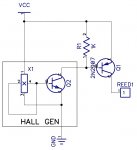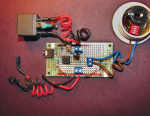Hi all
I cant seem to establish which hall effect switch(not analogue sensor) is normally on. I bought some OH3144E Hall Effect switches but it turns out that they are normally off. Im building an 08m2 timer and have been using reed switches but want to try a switch. I have tried the analogue sensors but had too much trouble setting interrupts.
So can anyone tell me a part number/model for a normally on hall effect switch
thanks for taking the time
Steve
I cant seem to establish which hall effect switch(not analogue sensor) is normally on. I bought some OH3144E Hall Effect switches but it turns out that they are normally off. Im building an 08m2 timer and have been using reed switches but want to try a switch. I have tried the analogue sensors but had too much trouble setting interrupts.
So can anyone tell me a part number/model for a normally on hall effect switch
thanks for taking the time
Steve



